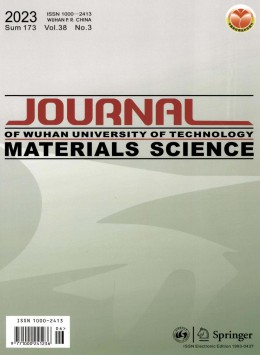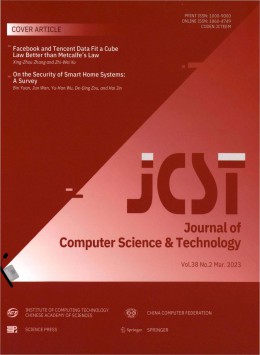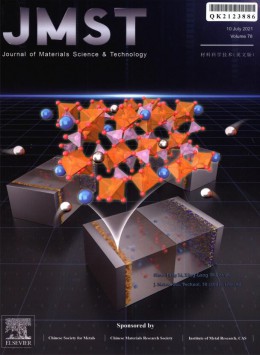
Water Science and Engineering杂志CSCD期刊统计源期刊
Water Science and Engineering
同学科期刊级别分类 CSSCI南大期刊 北大期刊 CSCD期刊 统计源期刊 部级期刊 省级期刊
- 季刊 出版周期
- 32-1785/TV CN
- 1674-2370 ISSN
- 主管单位:中华人民共和国教育部
- 主办单位:河海大学
- 创刊时间:2008
- 开本:B5
- 出版地:江苏
- 语种:英语
- 审稿周期:1-3个月
- 影响因子:0.29
- 被引次数:33
- 数据库收录:
CSCD 中国科学引文数据库来源期刊(含扩展版)、统计源期刊(中国科技论文优秀期刊)、知网收录(中)、维普收录(中)、万方收录(中)、EI 工程索引(美)、CA 化学文摘(美)、哥白尼索引(波兰)、剑桥科学文摘、国家图书馆馆藏、上海图书馆馆藏、文摘与引文数据库
Water Science and Engineering杂志简介
《Water Science and Engineering》focuses on new concepts, theories, methods, and techniques related to water issues. The published papers cover the latestresearch in the fields of water resources, aquatic environment, water ecology, and water engineering, with emphases placed on the innovation and applicability of science and technology in large-scale hydropower project construction, large river and lake regulation, inter-basin water transfer, hydroelectric energy development, ecological restoration, the development of new materials, and sustainable utilization of water resources.
《Water Science and Engineering》aims to promote international exchange in academic research on water science, and to contribute to theinternationalization progress of Chinese water science as well as the solution of water-related issues.
The journal has an international editorial board consisting of well-known professors and experts in water science and engineering at prominent research institutes and universities around the world. The Editorial Board plays a leading role in guaranteeing high quality of the journal and improving the international influence of the journal.
By now,《Water Science and Engineering》has been accepted by Ei Compendex, Emerging Sources Citation Index, SciVerse Scopus, Chemical Abstracts, ProQuest-CSA, Index Copernicus, Chinese Science Citation Database, Chinese Science Abstracts, China Academic Journals Integrated Online Database, Wanfang Database of China, and VIP Database of China.
《Water Science and Engineering》was awarded the Distinctive Journal of the 1st English-Language Journals of Chinese University.
Water Science and Engineering杂志栏目设置
水科学研究、水工程建设、水资源保护、水生态修复、综合述评、学术争鸣
Water Science and Engineering杂志荣誉信息
Water Science and Engineering杂志订阅方式
地址:1 Xikang Road, Nanjing 210024, P.R.China,邮编:210098。
Water Science and Engineering杂志社投稿须知
Requirements for Manuscripts:
1.The submitted manuscripts must be neither published nor under consideration for publication elsewhere.
2.The manuscripts should be written in concise and grammatical English.
3.The manuscripts should be arranged in Word format (paper size B5) with one column according to the paper template (including font, size, line space, etc.).
4.The paper should be organized in the following order: title, author(s), affiliation(s), abstract, key words, introduction, research contents, results, conclusions, acknowledgements, and references.
5.The title is preferred to be limited within 10 substantives. Only the initial of the first word needs to be capitalized, the others be lowercase letters (except proper nouns), and unusual abbreviations should be avoided.
6.Authors’ given names should come before surnames. The initials of given names and all the letters of surnames should be capitalized (e.g. John Quincy ABBOT). For Chinese authors’ names, a hyphen is necessary between two given names (e.g. Cheng-li ZHANG). There should be commas between authors’ names.
7.An abstract of more than 150 words (the title not repeated in the first sentence, and diagrams, formulas and references not included), which gives prominence to the creative ideas, the work’s purposes, methods, major findings, conclusions, etc., and key words (3 to 8 words) should be included in the manuscript.
8.The International System of Units (SI) should be adopted in the manuscript. All units in the text, figures, tables, and calculations should be used consistently.
9.All variables symbolized by single letters should be in italics; standard functions and letters symbolizing constants should be in normal style; and letters symbolizing vectors, tensors, and matrixes should be in bold italics. Each symbol that is presented in the paper for the first time should be defined. Foreign characters in capital form or lowercase form in the text and formulas should be distinguishable. Letters, numbers, and signs used as either superscripts or subscripts should be clearly identified.
10.Figures and tables with proper design should be placed right after where they’re referred to in the text. Each figure or table should have a corresponding title and be numbered consecutively. Three-line tables are required to be used. Iconographs should be drawn by computers in the format of TIF, JPG, or BMP for editing convenience. Variables in figures and tables should be in italics. Units of variables in normal style need to be put in parentheses, e.g. v (m/s).
11.If the paper is sponsored by a fund project or an important subject, please show its title at the bottom of the first page and put the serial number in subsequent parentheses.
12.The author-date system is required to be used for citations in the text and the reference list.
(1)Citations in the text: If an author’s name is cited in the text, the publication year in parenthesis should follow the name of the author, e.g. Stoker (1992). If the results, rather than the name of the author(s), are cited, a. use the author’s name(s) and the publication year(s) in parenthesis for the citation of a publication with two or less authors, e.g. (Stoker, 1992), (Lyn and Goodwin, 1987; Stoker, 1992); b. use the first author’s name followed by “et al.” for the citation of a publication with three or more authors, e.g. (Xie et al., 2004; Stoker, 1992); and c. use a lowercase letter like “a, b, c…” following the year to distinguish the works that are published during the same year by the same author e.g. (Zienkiewicz, 1995a, b, c).
(2)The reference list should consist of all published works referred to in the text, and arranged alphabetically by the authors’ names. All the authors of each reference should be listed. References include books, journals, theses, etc., which are published at home and abroad. The following reference formats are generally used:
1)Books
Strunk Jr., W., White, E.B., 2000. The Elements of Style, fourth ed. Longman, New York.Chen, S.Y., 1998. Engineering Fuzzy Set Theory and Application. National Defense Industry Press, Beijing (in Chinese).
Mettam, G.R., Adams, L.B., 2009. How to prepare an electronic version of your article. In: Jones, B.S., Smith, R.Z., eds., Introduction to the Electronic Age. E- Publishing Inc., New York, pp. 281–304.
2)Journals
Chopra, A.K., Chakrabarti, P., 1981. Earthquake analysis of concrete gravity dams including dam-water-foundation rock interaction. Earthquake Engineering and Structural Dynamics, 9 (4), 363–383.
3)Conference Proceedings and Symposiums
Berkhoff, J.C.W., 1972. Computation of combined refraction and diffraction. In: Proceedings of the 13th International Conference on Coastal Engineering, 745-747. ASCE, Vancouver.
Granger, R. J., 1997. Comparison of surface and satellite-derived estimates of evapotranspiration using a feedback algorithm. In: Kite, G.W., Pietroniro, A., Schultz, T.J., eds., Applications of Remote Sensing in Hydrology, Proceedings of the 3rd International Workshop NHRI Symposium. NASA Goddard Space Flight Center, Greenbelt, pp. 216–220.
4)Dissertations
Liu, C.J., 2004. Experimental Study on Unsteady Open-channel Flow and Bed-load Transport Properties. Ph. D. Dissertation. Tsinghua University, Beijing (in Chinese).
5)Others (standards, reports, electronic bulletins, newspapers, and patents)
Water Science and Engineering杂志数据信息
影响因子和被引次数
杂志发文量
Water Science and Engineering杂志发文分析
主要资助课题分析
| 资助课题 | 涉及文献 |
| 国家重点基础研究发展计划(973Program) | 13 |
| 高等学校学科创新引智计划(B08048) | 8 |
| 国家自然科学基金(90510017) | 5 |
| 国家自然科学基金(50539010) | 5 |
| 国家重点基础研究发展计划(2006CB400502) | 4 |
| 国家自然科学基金(50479017) | 4 |
| 国家重点基础研究发展计划(2010CB951101) | 3 |
| 国家自然科学基金(50879020) | 3 |
| 国家自然科学基金(51079024) | 3 |
| 国家自然科学基金(51139001) | 3 |
主要资助项目分析
| 资助项目 | 涉及文献 |
| 国家自然科学基金 | 317 |
| 国家重点基础研究发展计划 | 38 |
| 高等学校学科创新引智计划 | 15 |
| 中国博士后科学基金 | 9 |
| 国家教育部博士点基金 | 4 |
| 国家高技术研究发展计划 | 3 |
| 湖北省自然科学基金 | 3 |
| 广西壮族自治区自然科学基金 | 2 |
| 国家社会科学基金 | 2 |
| 霍英东教育基金 | 2 |




